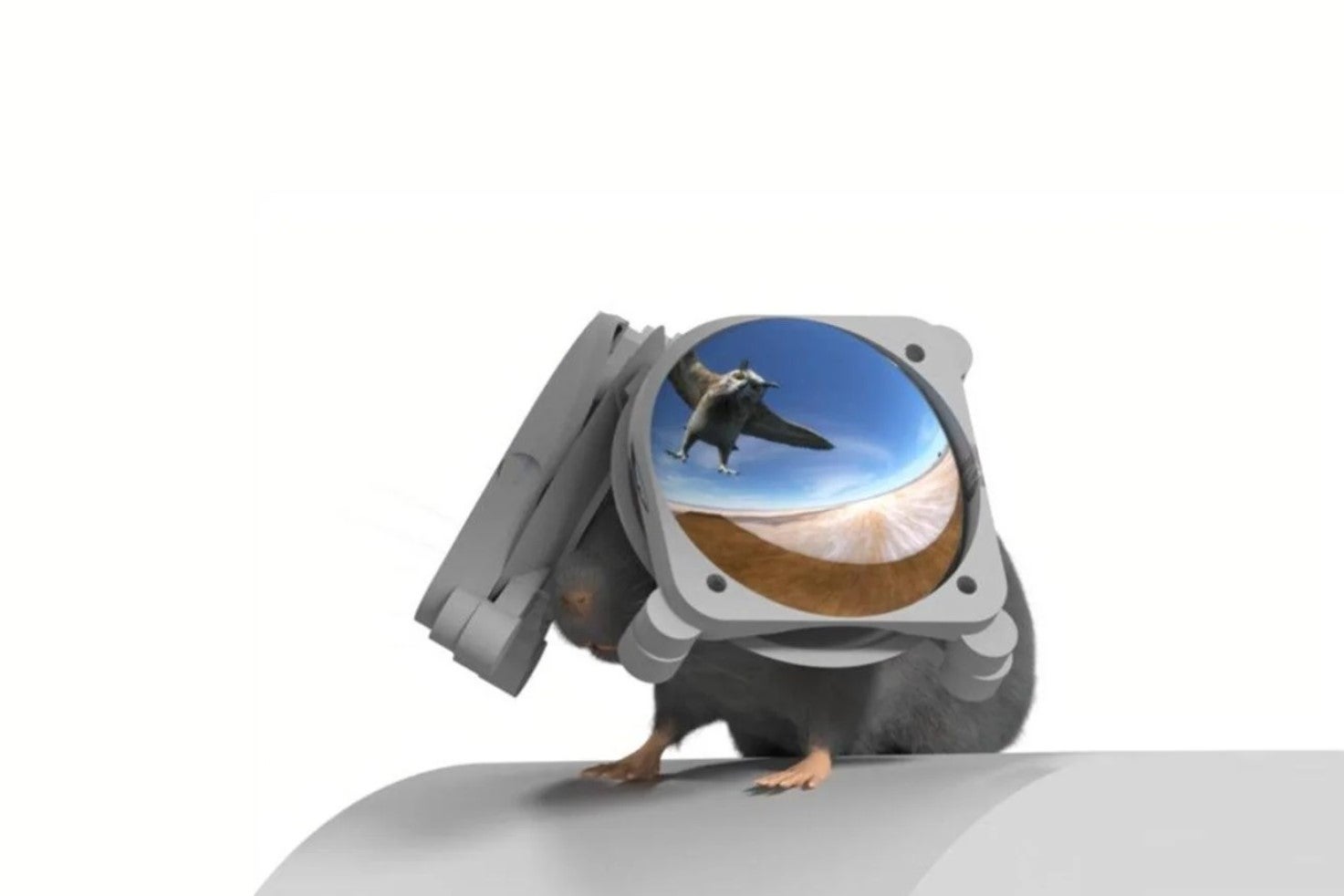Scientists put tiny VR goggles on mice to learn how animals think
Tiny headset simulates predators to assess how the brain reacts when presented with a life-or-death scenario

Scientists have built a tiny pair of virtual reality (VR) goggles for mice in an effort to better understand how their brains work.
Using custom-designed lenses and miniature displays, a team from Northwestern University in the US created a compact VR headset called Miniature Rodent Stereo Illumination VR (iMRSIV).
The VR goggles were able to accurately simulate overhead threats, like birds, in order to assess how the brain reacts when presented with a life-or-death scenario.
It is not the first time VR systems have been used to study mice, however the researchers claim the new headset overcomes several of the issues with current state-of-the-art goggles.
“So far, labs have been using big computer or projection screens to surround an animal. For humans, this is like watching a TV in your living room: you still see your couch and your walls; there are cues around you, telling you that you aren’t inside the scene,” said Daniel Dombeck, a professor of neurobiology at Northwestern University who led the research.
“Now think about putting on VR goggles, like Oculus Rift, that take up your full vision. You don’t see anything but the projected scene, and a different scene is projected into each eye to create depth information. That’s been missing for mice.”

Rather than strapping the VR goggles to the mice’s heads, the research involved perching the setup directly in front of its face while keeping it in place on a treadmill.
This allowed the researchers to closely study the animal’s neural circuits during various behaviours as it traversed the virtual environment.
“VR basically reproduces real environments. We’ve had a lot of success with this VR system, but it’s possible the animals aren’t as immersed as they would be in a real environment,” Professor Dombeck said.
“It takes a lot of training just to get the mice to pay attention to the screens and ignore the lab around them.”
The scientists now hope to make the technology available to other labs for further studies, such as simulating situations in which the mouse isn’t the prey but is the predator.
The research was detailed in a study, titled ‘Full field-of-view virtual reality goggles for mice’, was published in the journal Neuron this month.
Join our commenting forum
Join thought-provoking conversations, follow other Independent readers and see their replies
Comments
Bookmark popover
Removed from bookmarks